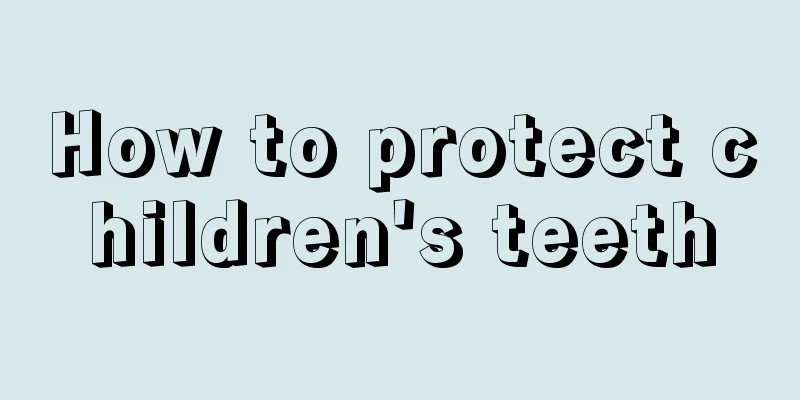Is premature infant cholestasis easy to treat?

|
The visceral system of premature infants is not fully developed. For example, the liver and gallbladder system is not well developed, which can easily lead to bile stasis. This often induces symptoms of pathological jaundice in children. This is due to the child's imperfect development. Treatment must be strengthened in this regard. If the child has biliary atresia, surgical treatment should be performed. Let's take a look at this aspect. Is premature infant cholestasis easy to treat? Infantile cholestasis refers to a persistent decrease in bile secretion in infants due to hepatocellular damage and/or intrahepatic and extrahepatic bile duct obstruction. The main clinical manifestations are hyperconjugated hyperbilirubinemia [i.e. blood direct bilirubin>25.5μmol/L (1.5mg/dl) or the ratio of direct to total bile>20%], hepatosplenomegaly, abnormal liver function and fat malabsorption. Some people call this disease infantile hepatitis syndrome. Cholestasis is treatable. For example, biliary atresia, common bile duct cyst and gallstones can be treated surgically. Pathogenesis 1. Physiology of bile secretion Bile contains bile acid, which can increase bile secretion and promote the excretion of conjugated bilirubin, cholesterol, phospholipids and other fat-soluble organic substances (including certain drugs) from bile. 2. Pathophysiology and clinical characteristics Cholestasis may cause the following pathophysiological changes and clinical consequences. (1) Substances normally excreted through bile are retained or refluxed into the body, increasing their blood concentration and producing corresponding clinical manifestations, such as hyperconjugated bilirubinemia causing jaundice; hypercholecidemia can cause skin itching; hypercholesterolemia can cause xanthomas in severe cases. Both serum phospholipids and lipoprotein X increase, which also hinders the excretion of certain drugs and contrast agents, such as sodium bromophthalein (BSP) and 131I rose bengal. (2) When there is a decrease or absence of bile in the intestine and a decrease in conjugated bilirubin, the stool will be light or grayish white. A decrease in bile acid will lead to fat and fat-soluble vitamin absorption disorders, and children may develop steatorrhea, malnutrition, growth stagnation, and fat-soluble vitamin deficiency. Vitamin A deficiency can cause Bitartrate spots and keratinization of the skin and mucous membranes; D deficiency can cause rickets and tetany; E deficiency can cause neuromuscular degeneration and proximal muscle atrophy; K deficiency can cause intracranial, gastrointestinal bleeding, and prolonged prothrombin time. (3) Hepatocellular damage and/or bile stasis caused by the primary disease can often cause focal necrosis of the liver, giant changes in hepatocellular structure, hepatosplenomegaly, and abnormal liver function such as increased levels of alanine aminotransferase (ALT), aspartate aminotransferase (AST), alkaline phosphatase, 5-nucleotidase, and alpha-fetoprotein, and impaired albumin and coagulation factor synthesis. The disease progresses and may develop into biliary cirrhosis, eventually causing portal hypertension and/or liver failure. However, most children can recover smoothly clinically. |
<<: Iron supplementation time for premature infants
>>: What causes premature babies to have a fast heart rate?
Recommend
What are the symptoms of baby cramps?
Babies sometimes have cramps, and parents don’t k...
What causes swollen eye bags in children?
Generally speaking, some older people are prone t...
What to do if your 4-month-old baby is constipated
Every change in the baby after birth is watched b...
Baby feels phlegm in throat when feeding
We all know that when mothers feed their newborns...
At what age should children start brushing their teeth?
Brushing teeth can better ensure oral hygiene and...
What to do if a child has repeated fever and cough
It is never good for a baby to be sick, which mak...
Blisters on child's skin
Blisters are also a type of herpes, with a lot of...
How to treat bronchial asthma in children?
Children will always suffer from various diseases...
Newborns stretch frequently
In everyone's impression, all newborn babies ...
My child is hot all over but has no fever, what's going on?
It is very common for children in early childhood...
Treatment for children's cough
Children's immunity is generally weak, and th...
Is emergency room visit contagious for young children?
Young children have relatively weak constitutions...
What should I do if my baby has allergies at the corners of his mouth? Parents need to understand these methods
When the baby has allergies at the corners of the...
What should I do if the beans planted by my baby become festering and burst?
Planting beans for babies is actually a common na...
Dislocated front teeth in children
If a person's teeth are not beautiful, it wil...









